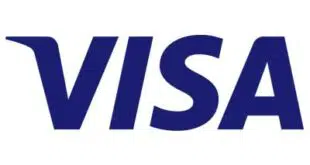Pay By Touch Solutions, which has spent the past several years building out a point-of-sale network for its biometric-payment service, is now joining the rush to bring electronic payment alternatives to the Internet. Its new Pay By Touch Online product, which it is announcing today, is set to go live this spring with Web merchants and will allow the more than 2 million consumers who have enrolled in the brick-and-mortar service so far to buy goods online by using fingerprint sensors attached to their home computers. In introducing the service, San Francisco-based Pay By Touch is stressing security for consumers and low acceptance costs for merchants to distinguish itself from a raft of online payment alternatives now available or under development. “We're trying to help consumers transact more securely and conveniently on the Internet,” says Jon Siegal, the executive vice president at Pay By Touch who is heading up the effort. Pay By Touch, which has relationships with more than 10,000 online retailers through its acquisitions of CardSystems Solutions Inc. and Intercept Payment Solutions, both merchant processors, will not say which ones it is talking to, though Siegal says he expects to implement deployments “throughout 2006.” The merchants linked to CardSystems, whose platform and other assets Pay By Touch acquired last fall, “will be the first ones we talk to,” says Siegal. Pay By Touch Online will rely on the same electronic fingerprint-identification technology used in some supermarkets and other stores that have adopted the service. Siegal says Pay By Touch is in talks with companies that make the sensors to certify their devices, which he says will sell to consumers for less than $30 apiece and will be distributed by financial institutions as well as by Pay By Touch. The new service will serve three main purposes. The “Express Sign-in” feature allows consumers to log into any Web-based service provider without entering passwords, user names, or other information. As long as the site has enrolled with the service, Pay By Touch will authenticate users from the data it picks up when they touch their sensors. A second component, “Multifactor Authentication,” will allow online banking services to identify users via password, computer ID, and fingerprint, addressing a guideline published late last year by the Federal Financial Institutions Examining Council that pronounced traditional single-factor (password/user-name alone) authentication inadequate. The guideline strongly encourages multifactor methods (Digital Transactions News, Oct. 26, 2005), though it doesn't recommend any particular technology. The third feature, “Express Checkout,” will allow enrolled merchants to sell products online to enrolled consumers, with all transactions processed by Pay By Touch from the electronic wallet consumers set up when they enroll. The wallets can contain credit and debit card accounts as well as checking-account access via the automated clearing house, though many POS merchants either disallow card usage or encourage the lower-cost ACH channel. Pay By Touch will offer funds guarantee to merchants on ACH e-check processing, though its transaction pricing will be higher for this option. One of the reasons Pay By Touch is screening sensor makers, Siegal says, is that the online service will establish a direct link from the consumer's computer to the company's servers, allowing encrypted fingerprint data to bypass the computer's operating system and, Pay By Touch hopes, frustrating trojans or other malware that might be on the machine. The service will include a loyalty program as well in which merchants and manufacturers will be able to “pre-populate” the wallets with offers such as discounts that can be spent online or in stores. Siegal will not give transaction projections for Pay By Touch Online or say how it will be priced, though he says merchants should expect to cut transaction costs in half when compared to what they pay currently to accept credit and signature debit cards. In the POS installations, merchants pay a fee to Pay By Touch as well as their routine discount or ACH fees for electronic transactions. Pay By Touch may face a hurdle when it comes to getting consumers to acquire and hook up fingerprint sensors. Consumer adoption of peripheral devices has lagged with other authentication and payment programs, though Siegal says the program should appeal to consumers who are wary of online commerce and want to have more control over transactions. “We don't make the consumer jump through hoops to get security,” he says. “Consumers have control. It's their fingerprint, not something inside their computer that they can't see or touch. People are starting to see their computers as untrusted devices.” Unlike the brick-and-mortar version, Pay By Touch Online will also charge a fee to consumers for the service. Siegal says this will list at $20 annually but will be bundled into a variety of offers that may affect the final price. At the same time, Pay By Touch is competing with a number of systems that have emerged in the past couple of years to offer merchants alternatives to credit card acceptance for online payments. Most of these, including one now rolling out called SECURE e-Bill (Digital Transactions News, Jan. 27), allow consumers to tap their checking accounts via their online banking or bill-payment services, with the banks' systems also providing strong enough authentication to give merchants a funds guarantee. Another company owned by Pay By Touch, ATM Direct, is also working on a payment product for e-commerce involving the use of PIN-based debit cards (Digital Transactions News, Dec. 16, 2005), but ATM Direct's technology is not involved in Pay By Touch Online, Siegal says. With Pay By Touch, consumers scan a finger when they enroll. The company stores not the fingerprint itself but a mathematically derived template. When the consumer scans her finger at the point of sale, she enters a search code that allows Pay By Touch to perform a fast match with the template. Once the company authenticates the consumer, the transaction proceeds across the channel the consumer has chosen from those available in her electronic wallet. Pay By Touch has had most of its success so far among supermarkets, with chains like Piggly Wiggly and Cub Foods adopting the technology. Through its ownership of CardSystems, the company also has links to another 120,000 POS locations.
Check Also
With New Sheriffs in Town, Payment Players Can Expect Stiffer Scrutiny, a Lobbyist Warns
Payments companies have sensed increasing regulatory pressure since the Biden Administration’s inauguration last year, and …




